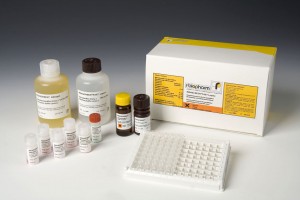Lupin
Lupin is an important food allergen and must be declared as an ingredient on packages according to EU Directive 2007/68/EC.
Lupine seeds belong to the leguminosae plant family like peanuts, soy beans, peas, beans and lentils. Nearly 300 kinds of lupines are found in 3 areas of the world (Mediterranean region, North America and the Andes). Only 4 strains of lupines have been cultivated (sweet lupines) for use in food and feed (L. albus, luteus, angustifolius and mutabilis) due to their low alkaloid content. Based on their high protein content of 35 – 42 % lupines are increasingly used as food additives in snacks, pasta, bread, cookies, coffee and some vegetarian instant meals for stabilisation of the texture and optimisation of recipe costs comparable to soy.
Lupines are a very versatile ingredient: they are generally used as a natural protein source as an alternative to soy and animal / meat products in human food and animal feed. They are able to bind water in food and therefore can be used as a replacement of egg in bread and bakery products. This increases the freshness and stability of those products. Beside this, lupine flour is used instead of wheat, rye or barley flour in the case of dietetic food.
Parallel to the increased use, allergic IgE-mediated reactions has been reported since 2000 and cross-reactions have been observed in the case of peanut allergic persons. Due to the fact that lupines can cause severe allergic reactions they should be declared in food products. The allergen can be present as an ingredient or as a contamination in raw and cooked products.
In 2007, lupine has been added to the already existing “big eight” list of the European legislative (2007/68/EC, Annex IIIa). According to the regulation (EU) No. 1169/2011 lupine must be declared on food labels.

